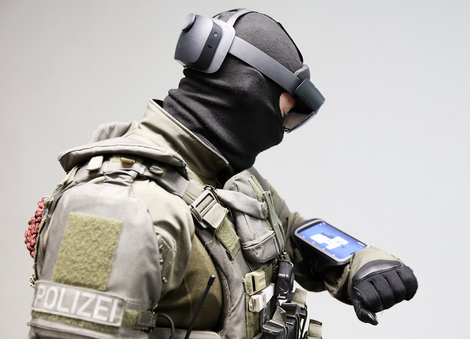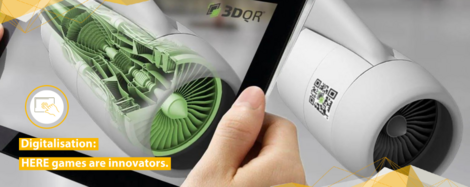Real-time risk analysis for the emergency services
Digital technology from Saxony-Anhalt helps with navigation in extreme situations

Whether they are taking part in raids on criminal gangs, attending the scene of a terrorist attack or searching for victims in a dangerous situation, such as a burning or collapsed building, the members of the emergency services who are the first to arrive at an incident always put their own lives at risk. In a joint project, software engineers from the University of Magdeburg and employees of the Saxony-Anhalt State Criminal Police Office and of METOP GmbH in Magdeburg have developed a three-dimensional operations monitoring system that can provide the police with important information about possible hazards during their deployments. There are also other potential applications for the technology.
In highly dangerous situations, such as a hostage crisis or a rescue operation, fast and effective action is needed that does not put members of the police, fire service or technical relief service in unnecessary danger. As soon as they arrive at the scene, they must assess the situation and get their bearings. The problem is that in crises of this kind they do not have plans of buildings or interior fixtures available to them. When special tactical response units enter unknown buildings, they move in a coordinated way and in small groups. They can only pass on information about the location by radio.
Joint project involving three partners from Saxony-Anhalt
In the near future, the police will have a digital 3D location system to help them with their hazardous work. It is called EVOK, which stands in German for real-time location assessment and deployment monitoring. It was developed as part of a joint project funded by the German Federal Ministry of Education and Research (BMBF)
by researchers from the faculty of computer science at Otto von Guericke University (OVGU) in Magdeburg and employees of the Saxony-Anhalt State Criminal Police Office (LKA LSA) and of METOP GmbH in Magdeburg. “Our goal was to develop a robust, practical system that does not restrict the work of the tactical response units and, at the same time, provides them with useful additional information in real time,” explains Professor Frank Ortmeier, head of the Chair of Software Engineering at OGVU.
Moving real-time images in three dimensions
Implementing the system presented technical challenges. While camera sensors on the helmet or the shoulder of the police officers record the location, a tiny computer creates a spatial image in real time. The teams’ movements generate huge volumes of data which can amount to several terabytes. Algorithms developed by the IT specialists in Magdeburg reduce this data down to the essential information in a fraction of a second. This is then presented to the police officers in real time on a screen on their wrists, and will also be available on a helmet display. GPS satellite positioning is not used because it often does not function inside buildings. Instead the movement data of the police teams is used to identify their current position as they pass through different rooms. In contrast to conventional computer games, which aim to create a very realistic impression, EVOK provides highly stylized essential information which allows special tactical response units, for example, to find their way around quickly and easily. The system developers have also made sure that the sensors used in the equipment can withstand impacts and falls and, at the same time, do not get in the way when the police officers are working. The EVOK system from Saxony-Anhalt is currently being successfully used on drones and on remote-controlled reconnaissance robots.
The Hugo Junkers prize for the most innovative project
In 2020, the team led by Professor Ortmeier, senior police officer Ralf Heidrich and Professor Thomas Leich was awarded the Hugo Junkers prize in the category “Most innovative project in the field of applied interactive technologies.” “By cooperating with real tactical response units from the Saxony-Anhalt State Criminal Police Office and sensor specialists from METOP GmbH, we have been able to create a practical system that can also be used in other areas of business,” says Professor Ortmeier. In addition to the system for the police, the software engineers in Magdeburg are working on similar solutions for other emergency services. Other potential users include staff maintaining sewage tunnels, miners underground, interior designers, real estate agents and cavers. There are promising opportunities for companies based in Saxony-Anhalt to open up new market niches using the wearable computers and head-mounted display.
Author: Uwe Seidenfaden/IMG Saxony-Anhalt

Companies from Saxony-Anhalt have recognized the potential of games for society and economy and are making more out of games - more ENTERtainment, more EDUtainment, more APITs.
